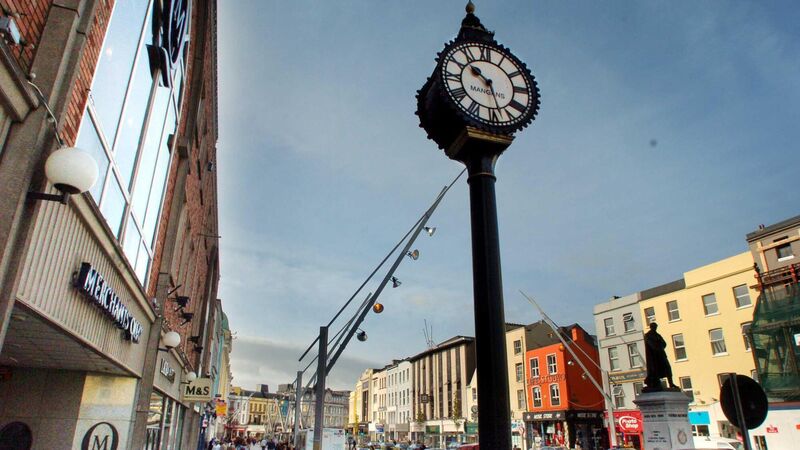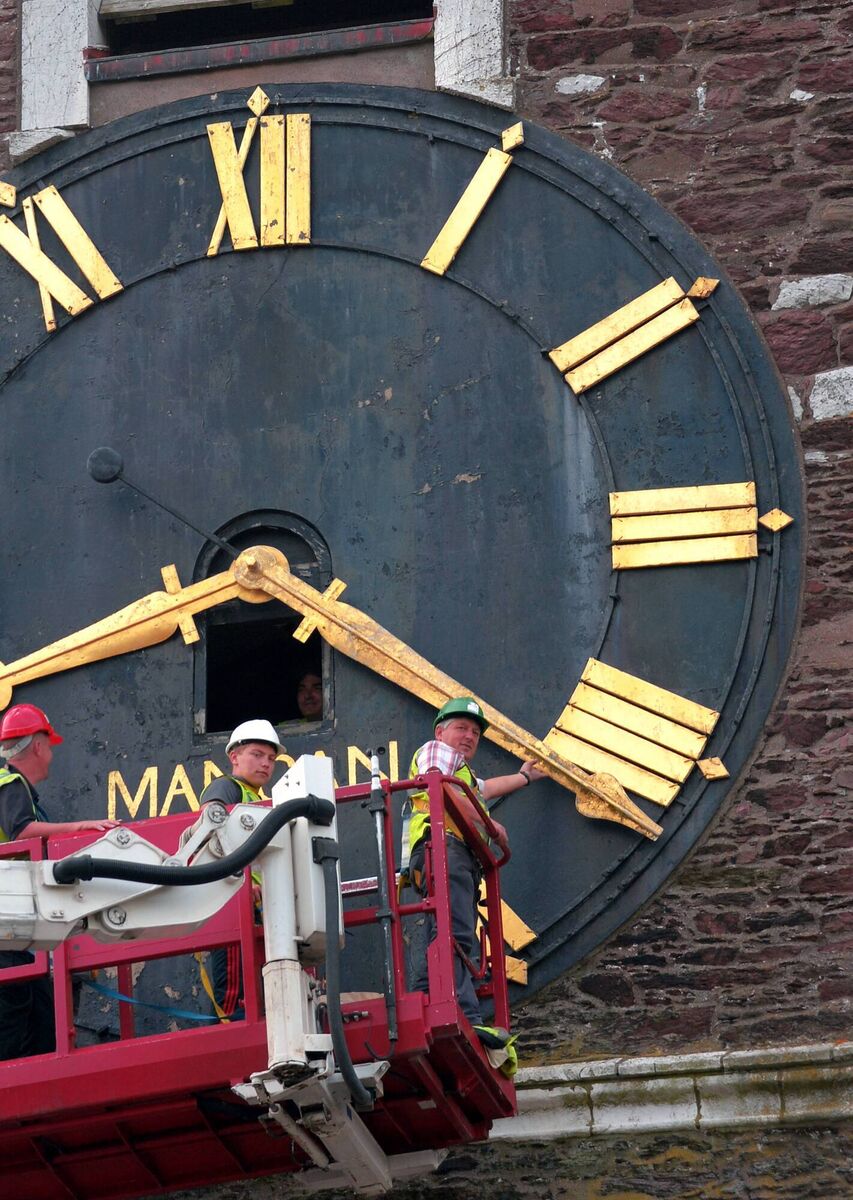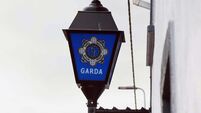Cork's landmark clock to turn back time with repair and restoration

Mangan's Clock will 'continue its role as a silent witness to the life of Cork City' after its refurbishment.
For a man with time on his hands, he’s never been busier.
Fresh from restoring the famous Clery’s clock in Dublin, horologist Philip Stokes is now set to restore Cork's landmark Mangan’s Clock to its former glory.
The cherished timepiece, which has stood on the southern capital’s main street for some 170 years, has survived wars, the burning of Cork, and the complete redesign of the street in the 1990s.
Now Cork City Council has confirmed that it is to fund its repair and restoration, which will be led by Mr Stokes, of Cork-based Stokes Clock and Watches. It will include the refurbishing of the clock hands, the repair and replacement of damaged parts, and the cleaning and painting of its tall supporting kerbside pillar.
It's hoped the work will start at the end of this month and take three months to complete. Mr Stokes, who was in Dublin yesterday for the unveiling of the Clery’s regeneration, which includes the famous Stoke’s-built Clerys clock, said Mangan's Clock needs "a serious restoration".
“We have to repair or replace damaged gearings, one of the dials has a hole in it, and that needs to be replaced, we have to replace the lighting, and the casing is very weathered," he said.
A council spokesperson said the restored clock will then be replaced at its original location to “continue its role as a silent witness to the life of Cork City”. Mangan's Clock has been a feature on St Patrick's Street since the 1850s.
The cast iron two-face clock sits atop a tapered pillar, with decorative surrounds and is surmounted by a finial.
It is named after Mangan Jewellers, a famous family business of clock makers and jewellers, which was based in a shop that stood from 1817 to the late 1980s at the site of the modern-day entrance to Merchant’s Quay shopping centre.
Mangans paid for the installation of the clock which was driven originally by a mechanism inside the shop window, which ran outside, under the footpath, and up inside the pillar, until the clock mechanism was later electrified.
Mangan's craftsmen were also involved in the manufacture of the iconic clock on St Anne’s Church, Shandon, in 1847. It was claimed to be the largest four-faced clock in the world until the installation of the clock in London’s Big Ben just over a decade later.
Cork City Council’s heritage officer, Niamh Twomey, said the city council recognises the importance of Mangan's Clock from both a social and technical heritage point of view.
“This clock has witnessed the ebb and flow of Cork city’s history, from narrowly escaping destruction during the Burning of Cork, to the construction of Merchant’s Quay shopping centre in the 1980s, to the refurbishment of the public realm on St Patrick's Street in more recent times,” she said.
“On a more romantic note, it is said that many a happy marriage started with a couple meeting for their 'first date' under the watchful eye of Mangan’s clock.”

Mr Stokes said he was delighted to see the famous Clerys Clock he built with his later father Chris unveiled as part of the Clerys regeneration project.
“The Clerys Clock is part of Stokes Clocks’ history since my late father, Chris, and I made the original,” he said. “It is an iconic clock that is very much the heart and the soul of Dublin, and the history of Dublin is very much part of us at Stokes Clocks.
“When commissioned to restore it our brief was to bring it back to the original. We restored the hands and the roman numerals with gold leaf, and we modernised the mechanical system to keep it going for the next 100 years.”
But he did hint that the clock may have been set to run on Cork time – at least an hour ahead.












